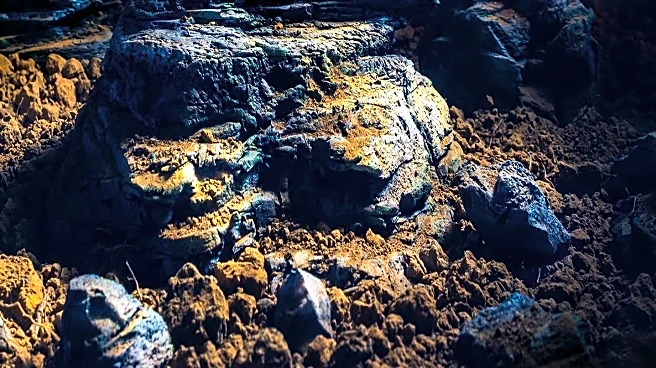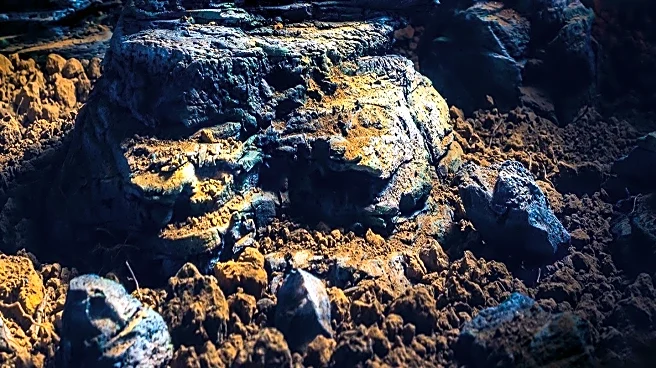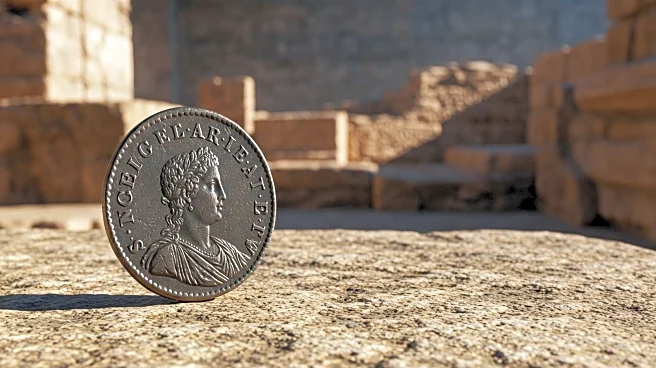What is the story about?
What's Happening?
A fisherman in Poland made a remarkable discovery when he reeled in a 700-year-old sword from the Vistula River. The find was announced by the Capital Conservator of Monuments in Warsaw, highlighting the sword's historical significance as a relic from the Middle Ages. The sword, which is largely intact, features a spherical pommel and a cross mark on its grip, indicating it may date back to the 13th or 14th century, a period coinciding with the founding of Warsaw. The artifact has been handed over to local authorities and is currently being studied by experts to determine more precise details about its origin and history.
Why It's Important?
The discovery of the sword provides a rare opportunity to gain insights into medieval warfare and craftsmanship. Such artifacts are invaluable for historians and archaeologists as they offer tangible connections to the past, helping to illuminate the cultural and historical context of the era. The sword's preservation and study could contribute to a better understanding of the technological and artistic capabilities of the time. Additionally, this find adds to a series of recent archaeological discoveries in Poland, underscoring the region's rich historical tapestry and its potential to yield further significant finds.
What's Next?
Experts are currently engaged in preserving the sword and conducting further research to uncover more about its origins. The cross mark on the grip, believed to be the blacksmith's signature, may provide clues to its exact date and provenance. As research progresses, findings could be shared with the public, potentially through exhibitions or academic publications, offering broader educational opportunities. The discovery may also prompt further archaeological exploration in the area, as the Vistula River and its surroundings could hold more historical artifacts waiting to be uncovered.
Beyond the Headlines
The sword's discovery raises questions about the historical context in which it was lost or discarded in the river. While the exact circumstances remain unknown, the find challenges assumptions about medieval practices in Poland, particularly regarding the deposition of weapons. This could lead to a reevaluation of historical narratives and encourage a deeper exploration of the region's past. Furthermore, the sword's condition, despite its age, highlights the potential for other well-preserved artifacts to be found in similar environments, offering new avenues for archaeological research.
AI Generated Content
Do you find this article useful?













